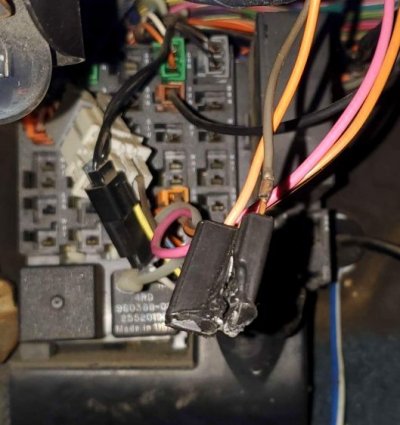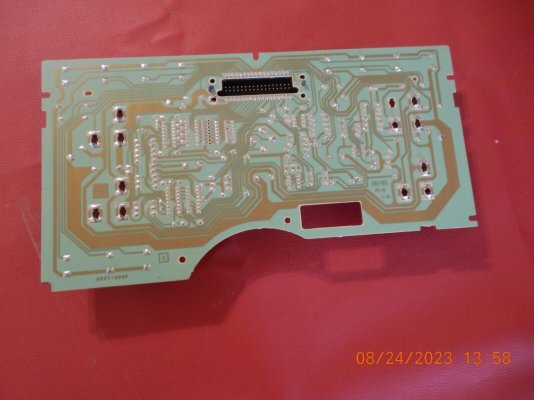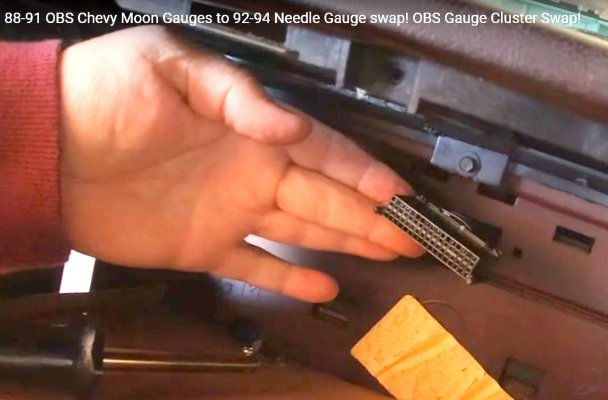Happy Halloween folks! I come bearing good news! That is (what is left) of my radio harness! For some reason known only to god, the ground was cut out of it. I put a ring connector on and bolted it to the dash and suddenly my gauges seem to read mostly correct AND both power windows work again AND my HVAC screen has come back on and I can hear relays clicking around in the dash. The blower motor doesn't seem to want to come online but I'm sure it's connected to another bad ground.
Making progress - good news!
Current issues now are:
When using the dimmer slider, at lowest brightness the gauges read correct, at anything past that, they read all crazy.
Check this out. In the following ground distribution drawing, you will see that both both the dimmer circuit AND the
the IP (Instrument Panel) share the same ground! Your symptoms match the documentation:
EDIT: Notice that the factory radio also shared this ground. We're getting pretty close to the scene of the accident...
(Taken from p.91 of '90 CK Wiring manual)
You must be registered for see images attach
Your symptoms indicate that you now have a shared marginal ground situation. When you turn the dimmer lights
up, the extra current causes a voltage drop across the ground, thereby causing a
brownout condition for the gauges in the Instrument Cluster. (See above.)
According to the manual, here is where G202 was originally installed on the assembly line:
You must be registered for see images attach
(From p. 135 of the '90 CK Wiring manual)
Alright, back in '90 the ALDL connector was used by GM. This was superceded by the OBD2
connector in the '95-'96 timeframe.
To minimize the variables, if you haven't already done so, put G202 back to it's original position.
And with a bit of fine sandpaper (180/220/etc) make every metal interface between the
mount > ground ring connector > washer > screw shoulder nice & shiny. And install the
screw securely.
And IF we still have an issue, then you need to go back to S207 (Splice 207) and make sure that
it isn't a marginal interconnect as well.
Again, although there are still issues, the symptoms match the documented ground distribution
fanout, so we on the right track. (!)
Please make all this so, and report back with your findings.
Last edited:





